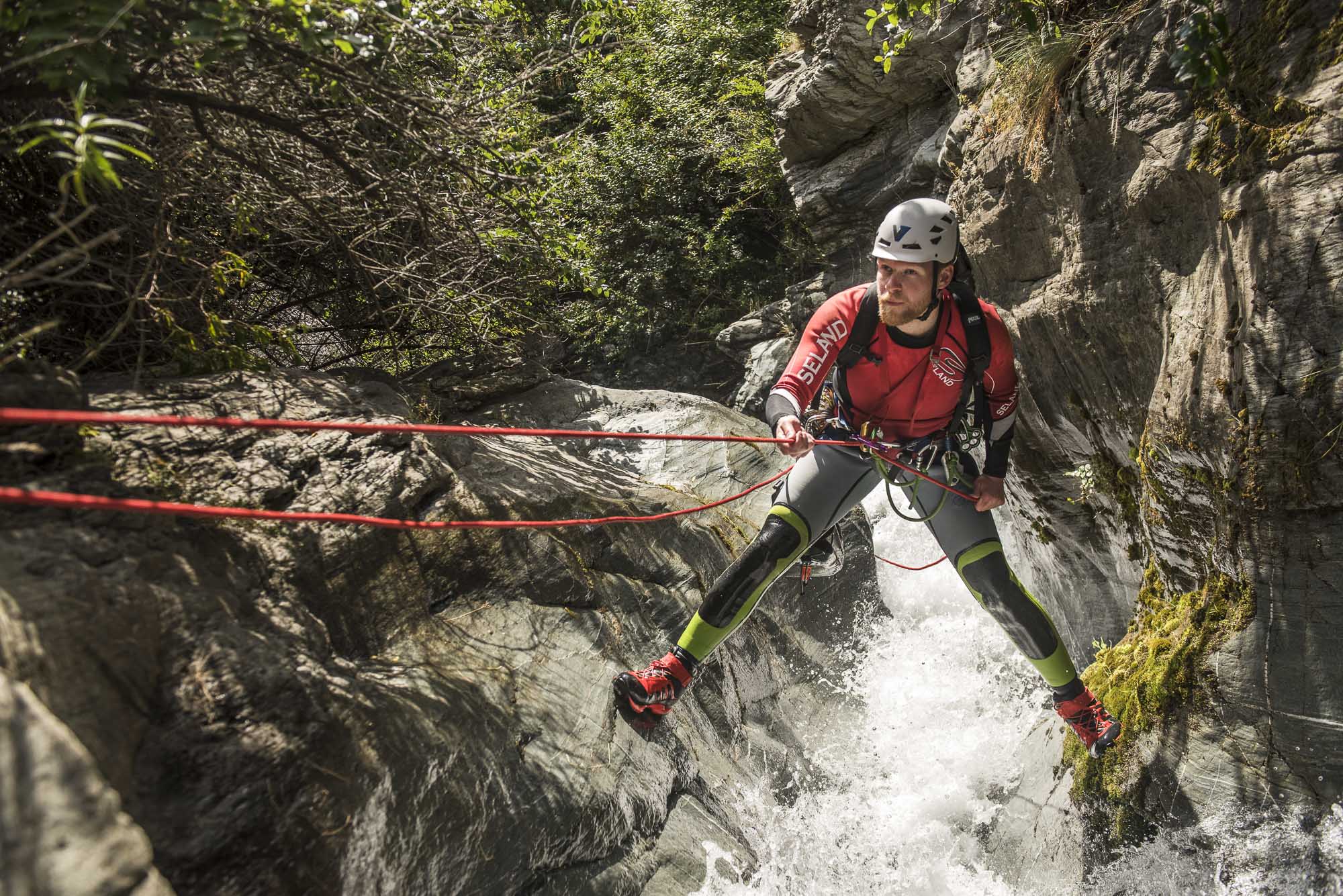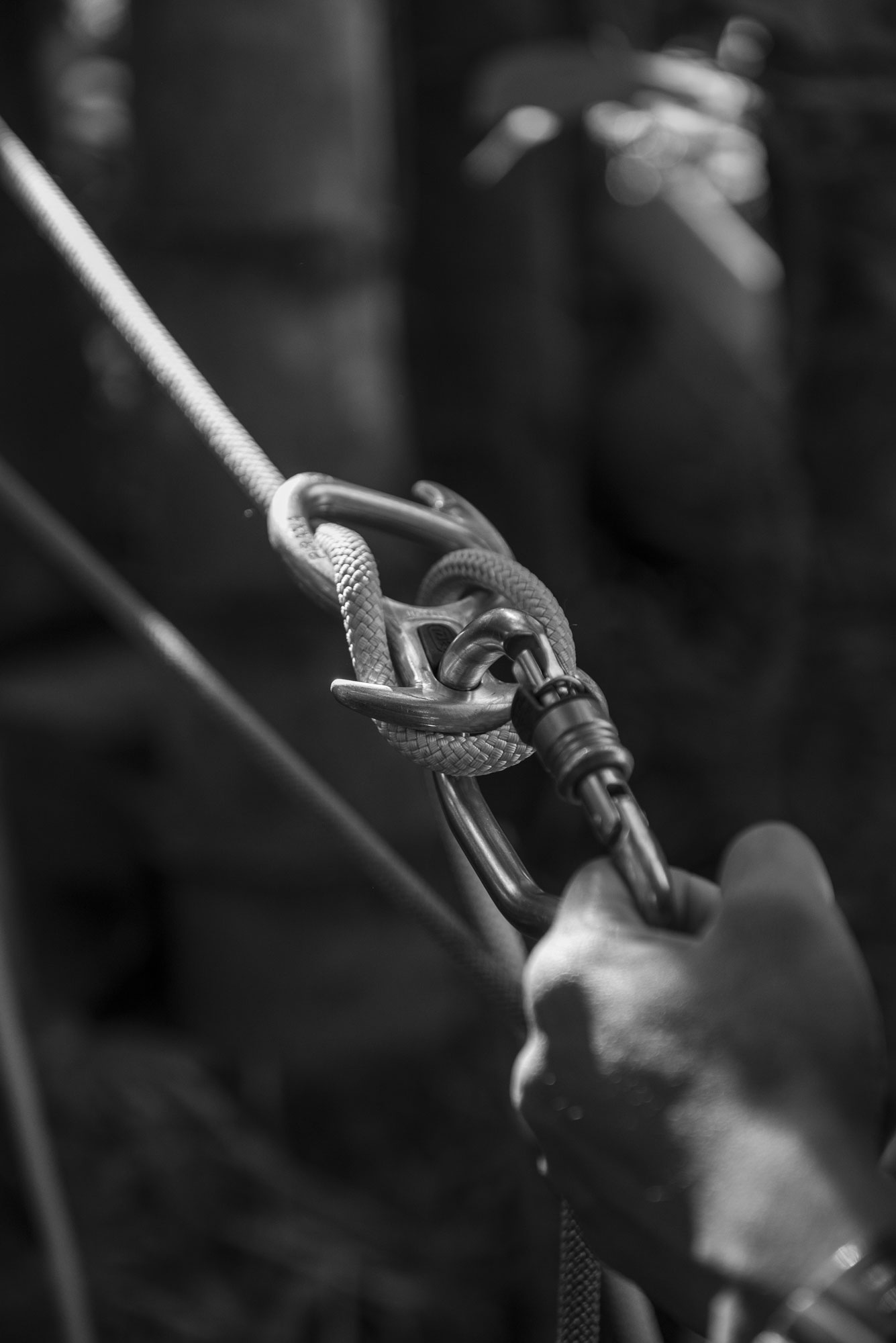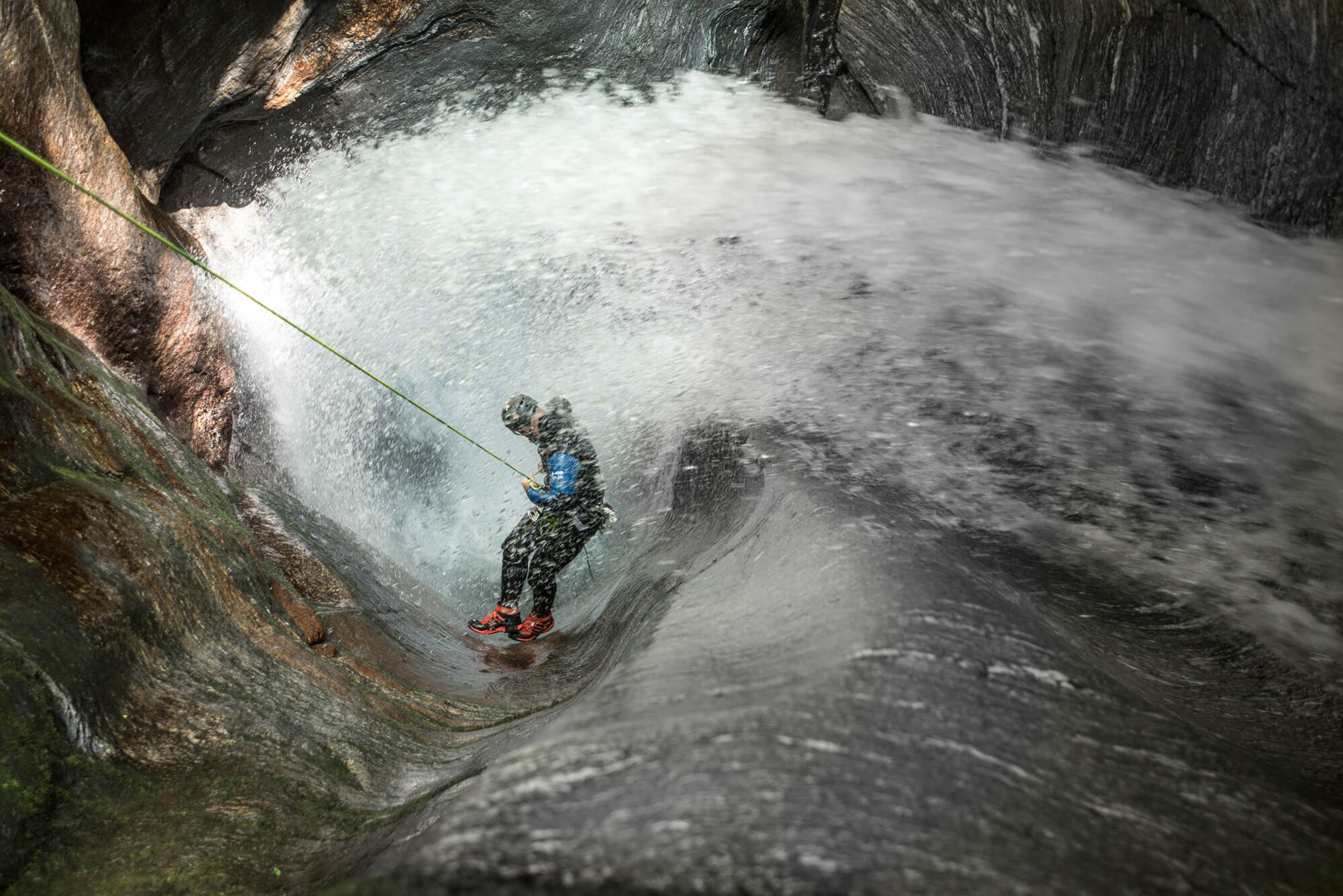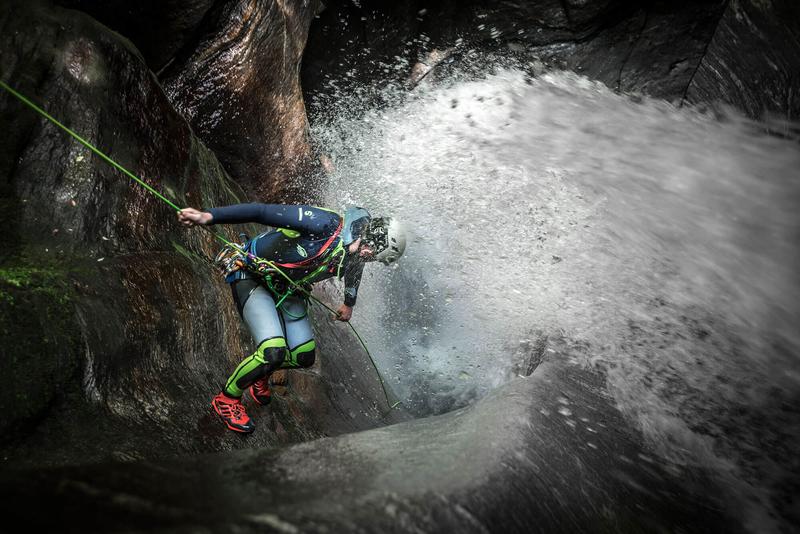Rappelling is an essential skill to master.
Rappelling (also referred to as abseiling in some countries) consists in using a friction device (also called a descender) to ensure a controlled descent using a rope. A controlled descent means a safe descent.
As we have covered in this article about the definition of canyoning, canyoning is the sport of descending canyons. We will learn many techniques and skills throughout our canyoning practice; some will be used more often than others, some only occasionally, but due to the descending nature of the sport, rappelling/abseiling will be constantly required. On this article we will see some of the most common mistakes beginners make when rappelling and how to avoid these bad habits.
When to rappel?
In the canyon we normally come across steep sections featuring obstacles that we need to safely overcome, and the use of rope systems is often required. Rappelling will certainly be the most used skill in your canyoning toolbox. Hence it’s important for us to master the rappelling technique in order to descend the canyons with efficiency and in safety.
Let’s polish our technique by avoiding these bad habits from the start:
1. Jumping Backwards
Forget what you see in the movies and Bear Grylls shows: jumping backwards like a S.W.A.T. team member is certainly not a characteristic of a controlled canyoning rappel! We should carefully choose our path of descent by looking side-to-side and analysing our path to avoid potential hazards (strong waterflow, tree branches, slippery spots…). If we continuously jump backwards we may lose the control of our trajectory, putting us into hazard’s way. In addition, if not performed correctly the jump may result in landing on your face, which is not pretty either!

Once you master the control of the rope and the ability to slow your momentum, jumping backwards can be a fun way to descend when there are not that may hazards but make sure you dominate the basics first. A good starting point is this free online canyoning course on V7 Academy.
2. Not Enough Friction
An essential step of the rappel technique is to choose the initial friction mode on our descender prior to engaging on the rappel. But what happens if we don’t add enough friction at the start? We could descend too fast and lose control, causing us to fall rapidly or requiring huge effort to hold ourselves. Needless to say this can be a very bad experience as a beginner! The ability to control the friction intensity on the fly allows us to have a more balanced and comfortable rappel technique, as well as saving our energy.
First and foremost, as beginners we should understand the different levels of friction on the descender and how to set it up, as you can learn in our free canyoning course. As a general rule, we should choose the normal friction mode to start with and adapt according to our technique level and body weight.

The second tip is to choose a dedicated canyoning descender that allows for adding/removing friction during rappel, which can be of great help for beginners. We can experiment with the different friction modes before and during rappel and get a feel to which one is more adapted for each situation.
3. One hand on brake strand
OK, guilty as charged: you have probably recalled one of the previous images and seen that I only hold the strand with one hand. The fact is that beginners are most likely to release the break strand in case of a slip or a fall during rappel. Our muscle memory can react and the instinct to grab something above to prevent us from falling is automatic. For this reason it is recommended that beginners hold the brake strand of the rope with both hands in case they let go of one of the hands.

Holding the rope below the descender also keeps our knuckles from scraping the rock and hurting ourselves in case of going past overhangs. Despite it is important to avoid placing our hand too close to the descender to prevent burns and getting our fingers jammed on the device!
In summary:
By working on these three habits and fixing them we will have a much more controlled and balanced rappel, avoiding major risks associated with loss of control and poor technique. Is there anything else you think we should add? Join the community and improve the discussion: it’s free!



